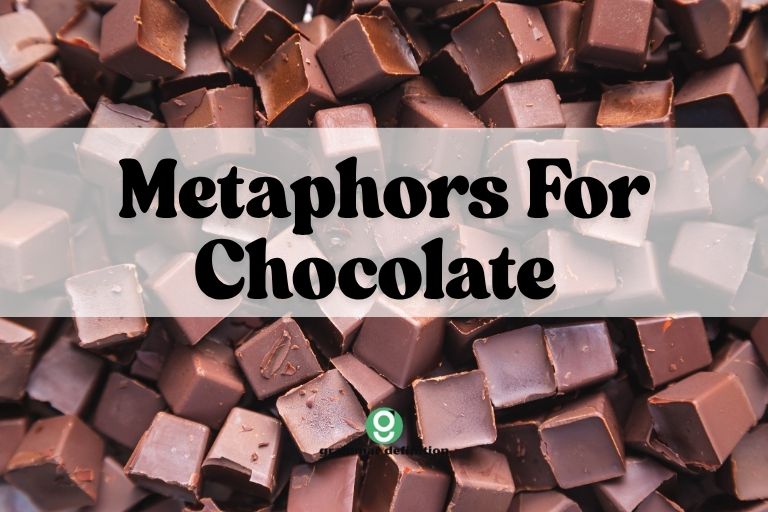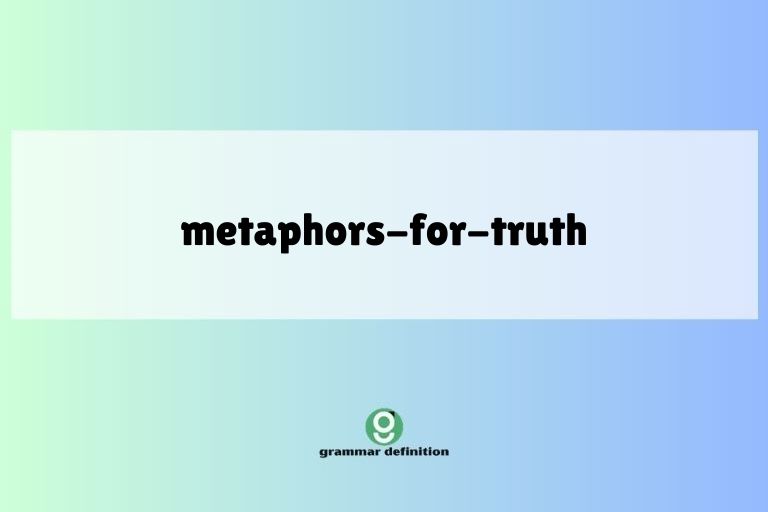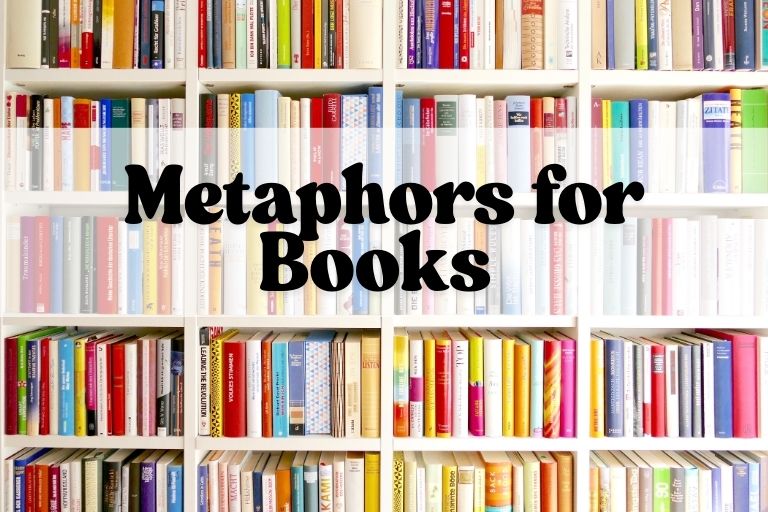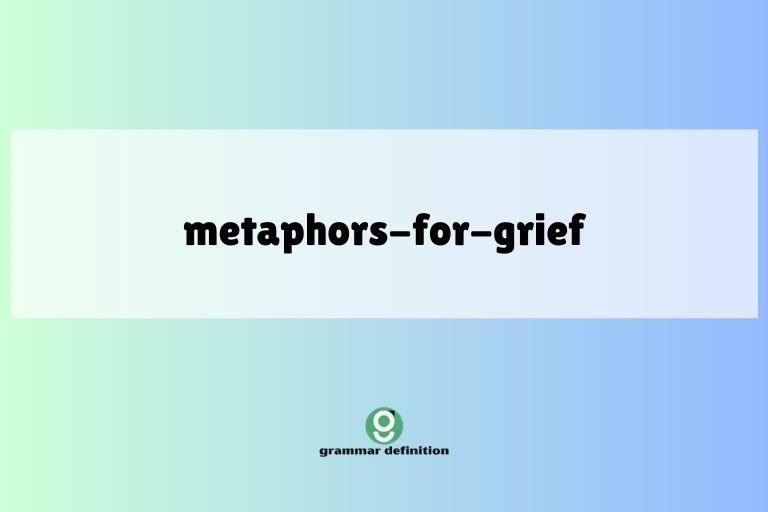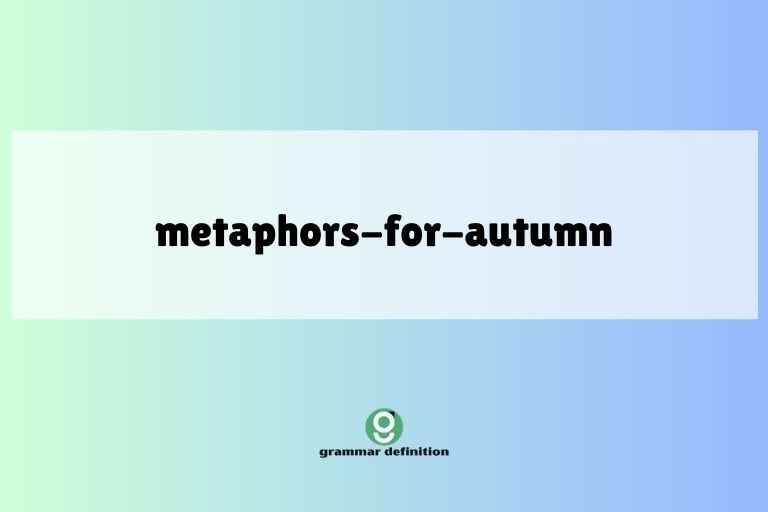Metaphors for Old: Understanding Figurative Language
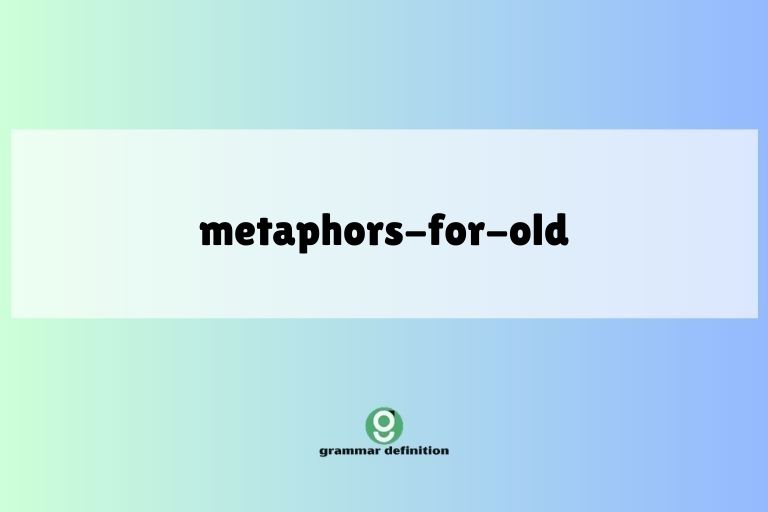
Metaphors are powerful tools in the English language, allowing us to convey complex ideas and emotions in a vivid and relatable way. When it comes to describing age, metaphors offer a nuanced perspective, moving beyond simple chronological descriptions.
Understanding these metaphors not only enriches our comprehension of literature and everyday conversation but also enhances our ability to express ourselves with greater precision and creativity. This article delves into the world of metaphors for ‘old,’ exploring their various forms, meanings, and usage, benefiting English language learners, writers, and anyone interested in the art of figurative language.
Table of Contents
- Introduction
- Definition of Metaphor and Its Role
- Structural Breakdown of Metaphors
- Types of Metaphors Used for “Old”
- Examples of Metaphors for “Old”
- Usage Rules for Metaphors
- Common Mistakes with Metaphors
- Practice Exercises
- Advanced Topics in Metaphorical Language
- Frequently Asked Questions
- Conclusion
Definition of Metaphor and Its Role
A metaphor is a figure of speech that directly compares two unrelated things, asserting that one thing is another, not in a literal sense, but to suggest a likeness or analogy between them. It’s a powerful tool used to create vivid imagery, convey complex ideas, and add emotional depth to language. Unlike similes, which use “like” or “as” to make comparisons, metaphors make a direct assertion, enhancing the impact and intensity of the comparison.
In the context of describing “old,” metaphors allow us to move beyond simple chronological descriptions. They enable us to express the various facets of aging, such as wisdom, experience, fragility, and decline, in a more nuanced and evocative manner.
Metaphors can paint a richer picture of the subject, resonating with the reader’s emotions and understanding.
Structural Breakdown of Metaphors
A metaphor typically consists of two main elements: the tenor and the vehicle. The tenor is the subject being described, in this case, “old” or something associated with old age. The vehicle is the object or concept to which the tenor is compared. The effectiveness of a metaphor lies in the connection between the tenor and the vehicle, where shared characteristics or associations create a meaningful comparison.
For example, in the metaphor “He is an old oak,” the tenor is “he” (an old person), and the vehicle is “old oak.” The shared characteristics might include strength, resilience, wisdom (associated with age), and a connection to nature. The metaphor suggests that the person possesses these qualities, drawing a parallel between their life and the enduring presence of an old oak tree.
Understanding this structure helps in both interpreting and creating effective metaphors.
Types of Metaphors Used for “Old”
Metaphors for “old” can be categorized based on the source of the vehicle, each category highlighting different aspects of aging. Here are some common types:
Natural Decay and Aging
These metaphors draw parallels between aging and the natural processes of decay, decline, and deterioration. They often evoke a sense of fragility, vulnerability, and the inevitable passage of time.
These metaphors can be powerful in conveying the physical and mental changes associated with growing old. They can also carry a sense of melancholy or acceptance, depending on the context and the specific imagery used.
Passage of Time
Metaphors related to the passage of time emphasize the accumulation of years and the impact of time on a person or object. They often use imagery of clocks, calendars, or historical events to represent the long duration of life and the experiences that have shaped an individual.
These metaphors give a sense of history, perspective, and the weight of accumulated experiences. They can also highlight the fleeting nature of time and the preciousness of each moment.
Objects Worn Out
These metaphors compare aging to the state of worn-out or dilapidated objects, such as old buildings, antique furniture, or tattered books. They highlight the wear and tear of age, the loss of functionality, and the potential for obsolescence.
They can also evoke a sense of history, character, and the stories embedded within the object. These metaphors can be particularly effective in describing the physical decline and the accumulated experiences of aging.
Seasons of Life
This is a very common set of metaphors. Comparing the stages of life to the seasons of the year is a classic metaphorical approach.
Spring represents youth and new beginnings, summer represents maturity and vitality, autumn represents decline and reflection, and winter represents old age and the end of life. These metaphors are deeply rooted in human experience and provide a powerful framework for understanding the cyclical nature of life.
Historical References
These metaphors relate aging to historical events, periods, or figures. They emphasize the long duration of life and the connection to the past.
They can evoke a sense of wisdom, experience, and the lessons learned from history. These metaphors can also highlight the changing nature of society and the individual’s place within the broader historical context.
They often require a certain level of cultural knowledge to be fully appreciated.
Examples of Metaphors for “Old”
The following tables provide examples of metaphors for “old,” categorized by the types discussed above.
Nature-Related Metaphors
The following table shows a list of nature-related metaphors for “old”. These metaphors often evoke a sense of decay, resilience, or wisdom derived from the natural world.
| Metaphor | Explanation |
|---|---|
| He’s a weathered oak. | Compares an old person to a strong, resilient oak tree that has withstood the elements. |
| She’s a dried-up riverbed. | Represents a loss of vitality and energy. |
| His mind is a tangled forest. | Suggests confusion and memory loss associated with old age. |
| She’s a crumbling cliff face. | Implies physical decline and fragility. |
| He is the setting sun. | Represents the end of life. |
| She’s an ancient, gnarled tree. | Suggests wisdom and long life. |
| He’s a faded bloom. | Represents a loss of beauty and vibrancy. |
| She’s a barren field. | Implies a lack of productivity or creativity. |
| His voice is a rustling leaf. | Suggests weakness and frailty. |
| She’s a dormant volcano. | Implies that she may have hidden power or energy. |
| He’s a wilting flower. | Represents decline and loss of beauty. |
| She’s a petrified forest. | Suggests rigidity and inflexibility. |
| His bones are brittle branches. | Implies fragility and vulnerability to injury. |
| She’s a dried-up well. | Represents a lack of resources or energy. |
| He’s a moss-covered stone. | Suggests longevity and a connection to the past. |
| She is the winter frost. | Represents the coldness and finality of old age. |
| He is a dying ember. | Represents the fading energy and vitality of old age. |
| She is the autumn wind. | Represents the decline and change associated with aging. |
| He is an eroding shoreline. | Represents the gradual loss of strength and vitality. |
| She is a fading echo. | Represents the diminishing presence and influence of old age. |
| He is a barren landscape. | Represents the lack of productivity and vibrancy in old age. |
| She is a withered vine. | Represents the loss of vitality and support in old age. |
| He is a decaying log. | Represents the slow and inevitable decline of old age. |
| She is a crumbling mountain. | Represents the gradual loss of strength and grandeur in old age. |
Time-Related Metaphors
The following table presents time-related metaphors for “old”. These metaphors emphasize the accumulation of years and the impact of time on a person or object.
| Metaphor | Explanation |
|---|---|
| He’s a relic of a bygone era. | Compares an old person to something from the past, no longer relevant. |
| She’s an antique clock, ticking slowly. | Represents the slow passage of time and the fragility of old age. |
| He’s a page torn from history. | Suggests a connection to the past and a loss of relevance. |
| She’s a time capsule, full of stories. | Implies a wealth of memories and experiences. |
| He’s the last hour of the day. | Represents the end of life. |
| She’s a faded photograph. | Suggests a loss of clarity and vibrancy. |
| He’s a forgotten date on the calendar. | Represents a lack of recognition or importance. |
| She’s a worn-out record, skipping on the same groove. | Implies repetition and a lack of new experiences. |
| He’s a grandfather clock, chiming the hours of the past. | Suggests a connection to tradition and history. |
| She’s an old map, marked with the paths of time. | Implies a journey through life and the accumulation of experiences. |
| He is the twilight years. | Represents the final period of life. |
| She is a living memory. | Represents the enduring impact of the past. |
| He is a chapter closing. | Represents the end of a phase of life. |
| She is a fading sunset. | Represents the beauty and decline of old age. |
| He is an echo from the past. | Represents the lingering influence of bygone days. |
| She is an antique book. | Represents the value and wisdom gained over time. |
| He is a vintage wine. | Represents the improved quality and value with age. |
| She is a historical landmark. | Represents the significance and enduring presence of the past. |
| He is a time-worn traveler. | Represents the experiences and wisdom gained through life’s journey. |
| She is an aged manuscript. | Represents the knowledge and insights accumulated over time. |
| He is the evening of life. | Represents the final stage of existence. |
| She is a timeless melody. | Represents the enduring beauty and value of old age. |
| He is a walking calendar. | Represents the embodiment of history and experience. |
| She is a living chronicle. | Represents the preservation and transmission of past events. |
Object-Related Metaphors
The following table shows object-related metaphors for “old”. These metaphors compare aging to the state of worn-out or dilapidated objects, emphasizing wear and tear and the loss of functionality.
| Metaphor | Explanation |
|---|---|
| He’s a rusty hinge. | Compares an old person to something that is stiff and no longer functions smoothly. |
| She’s a cracked vase. | Represents fragility and vulnerability. |
| He’s a tattered flag. | Suggests wear and tear and a loss of pride. |
| She’s a worn-out shoe. | Implies a life of hard work and exhaustion. |
| He’s a broken clock. | Represents a loss of purpose or functionality. |
| She’s a faded tapestry. | Suggests a loss of beauty and vibrancy. |
| He’s a chipped teacup. | Represents imperfection and fragility. |
| She’s a moth-eaten garment. | Implies neglect and decay. |
| He’s a dented shield. | Suggests a life of battles and hardships. |
| She’s a tarnished mirror. | Implies a loss of clarity and self-reflection. |
| He is a broken compass. | Represents a loss of direction and purpose. |
| She is a shattered mirror. | Represents the fragmentation and loss of identity. |
| He is a worn-out tool. | Represents the diminished usefulness and capability. |
| She is a faded photograph. | Represents the dimming memories and past experiences. |
| He is a rusty key. | Represents the inability to unlock new opportunities. |
| She is a cracked bell. | Represents the diminished sound and impact of her voice. |
| He is a broken record. | Represents the repetitive and unoriginal nature of old age. |
| She is a tattered sail. | Represents the struggles and hardships faced in life. |
| He is a weathered statue. | Represents the enduring but worn appearance of old age. |
| She is a chipped porcelain doll. | Represents the delicate and fragile nature of old age. |
| He is a dented helmet. | Represents the battles fought and the scars left behind. |
| She is a faded banner. | Represents the lost glory and achievements of the past. |
| He is a worn-out bridge. | Represents the diminished ability to connect and support others. |
| She is a tarnished silver locket. | Represents the hidden memories and emotions of old age. |
Season-Related Metaphors
The following table shows season-related metaphors for “old”. These metaphors compare the stages of life to the seasons of the year, highlighting the cyclical nature of existence.
| Metaphor | Explanation |
|---|---|
| He’s in the winter of his life. | Compares old age to the cold and barren season of winter. |
| She’s entering her autumn years. | Represents the decline and reflection associated with autumn. |
| He’s past his summer prime. | Suggests that he is no longer at his peak. |
| She’s a late bloomer, still in spring. | Implies that she is still young at heart. |
| His life is in its fourth quarter. | Represents the final stage of life, similar to winter. |
| She is experiencing her golden autumn. | Represents the beauty and richness of old age. |
| He is in the harvest season of his life. | Represents the rewards and accomplishments of old age. |
| She is enjoying her Indian summer. | Represents a period of unexpected vitality in old age. |
History-Related Metaphors
The following table shows history-related metaphors for “old”. These metaphors relate aging to historical events, periods, or figures, emphasizing the long duration of life and the connection to the past.
| Metaphor | Explanation |
|---|---|
| He’s a living history book. | Compares an old person to a repository of knowledge and experience. |
| She’s a relic of a forgotten empire. | Represents a connection to a bygone era. |
| He’s a veteran of many wars. | Suggests a life of battles and hardships. |
| She’s a monument to the past. | Implies a lasting legacy and significance. |
| He is an ancient artifact. | Represents the value and historical significance of old age. |
| She is a historical landmark. | Represents the enduring presence and influence of the past. |
| He is a witness to history. | Represents the ability to provide firsthand accounts of past events. |
| She is a treasure trove of memories. | Represents the rich and valuable experiences of old age. |
Usage Rules for Metaphors
Using metaphors effectively requires careful consideration of several factors. First, the tenor and the vehicle should have a clear connection or shared characteristic. The comparison should be meaningful and not arbitrary. Second, the metaphor should be appropriate for the context and the audience. Avoid using metaphors that are too obscure or culturally specific, as they may not be understood by everyone. Third, be mindful of the emotional impact of the metaphor. Some metaphors may be perceived as negative or offensive, especially when describing sensitive topics like age. Choose metaphors that are respectful and considerate.
Furthermore, avoid mixing metaphors. Mixing metaphors occurs when you combine two or more unrelated metaphors in a way that creates a confusing or nonsensical image. For example, “He was burning the midnight oil at both ends” combines the metaphor of “burning the midnight oil” (working late) with the image of burning a candle at both ends, creating a contradictory and illogical statement. Stick to a single, consistent metaphor to avoid confusion.
Common Mistakes with Metaphors
One common mistake is using clichéd metaphors, which are overused and have lost their impact. For example, “He’s as old as the hills” is a common metaphor for old age, but it lacks originality and creativity. Try to come up with fresh and unique metaphors that will capture the reader’s attention.
Another mistake is using metaphors that are too literal. A metaphor should be a figurative comparison, not a direct statement of fact. For example, saying “He is an old man” is not a metaphor; it’s a literal description. A metaphor would be something like “He is a grandfather clock, chiming the hours of the past.”
Finally, be careful not to use metaphors that are offensive or insensitive. Avoid metaphors that perpetuate negative stereotypes about old age or that trivialize the experiences of older people. Choose metaphors that are respectful and empowering.
Here are some examples of common mistakes with metaphors:
| Incorrect | Correct | Explanation |
|---|---|---|
| He is as old as time. | He is a weathered oak, bearing the marks of time. | “As old as time” is a cliché. The corrected version is more descriptive and evocative. |
| She is an old woman. | She is a vintage wine, aged to perfection. | “She is an old woman” is a literal statement, not a metaphor. The corrected version uses a metaphor to convey value and quality. |
| He’s burning the midnight oil at both ends. | He’s burning the midnight oil. / He’s working himself to the bone. | This mixes two metaphors, creating a nonsensical image. The corrected versions use a single, consistent metaphor. |
| She is like an old house. | She is an old manor, filled with history. | Saying “like an old house” is a simile, not a metaphor. The corrected version is a more descriptive metaphor. |
Practice Exercises
Test your understanding of metaphors for “old” with the following exercises.
Exercise 1: Identifying Metaphors
Identify the metaphors in the following sentences.
| Question | Answer |
|---|---|
| 1. He is the winter of his years. | He is the winter of his years. |
| 2. She is an old woman. | No metaphor. |
| 3. His mind is a tangled web. | His mind is a tangled web. |
| 4. She is as wise as an owl. | No metaphor (this is a simile). |
| 5. He is a relic of a bygone era. | He is a relic of a bygone era. |
| 6. She is a cracked vase, beautiful but fragile. | She is a cracked vase. |
| 7. He is old and tired. | No metaphor. |
| 8. She is a time capsule, filled with untold stories. | She is a time capsule. |
| 9. He is like a grandfather. | No metaphor (this is a simile). |
| 10. She is a faded photograph, her colors muted by time. | She is a faded photograph. |
Exercise 2: Creating Metaphors
Create a metaphor for “old” using the given vehicles.
| Vehicle | Your Metaphor |
|---|---|
| A worn-out book | She is a worn-out book, filled with dog-eared pages and highlighted passages. |
| A rusty key | He is a rusty key, unable to unlock new doors. |
| A setting sun | She is a setting sun, casting a warm glow on the horizon. |
| An old tree | He is an old tree, his roots running deep and his branches reaching for the sky. |
| A broken clock | She is a broken clock, her hands frozen in time. |
| A cracked mirror | He is a cracked mirror, reflecting a distorted image of the past. |
| An empty well | She is an empty well, her resources depleted by years of giving. |
| A faded letter | He is a faded letter, his words barely legible but his message still resonant. |
| A tattered flag | She is a tattered flag, waving proudly despite the wear and tear of time. |
| A weathered stone | He is a weathered stone, smoothed by the passage of countless years. |
Exercise 3: Correcting Incorrect Metaphors
Correct the following incorrect or clichéd metaphors.
| Incorrect Metaphor | Corrected Metaphor |
|---|---|
| He is as old as the hills. | He is an ancient mountain, his peaks weathered by time. |
| She is an old person. | She is a vintage tapestry, woven with the threads of life. |
| He is burning the candle at both ends. | He is a flickering flame, struggling to stay alight. |
| She is like an old car. | She is a classic car, admired for her timeless beauty and enduring style. |
| He is a rolling stone. | He is a weathered traveler, his path marked by countless journeys. |
| She is a diamond in the rough. | She is a polished gem, refined by the passage of time. |
| He is a ticking time bomb. | He is a dormant volcano, his inner strength waiting to be unleashed. |
| She is a shrinking violet. | She is a resilient orchid, thriving in the face of adversity. |
| He is a fish out of water. | He is a wise owl, observing the world from a distance. |
| She is a blank slate. | She is a palimpsest, her surface layered with the stories of the past. |
Advanced Topics in Metaphorical Language
For advanced learners, exploring the philosophical and psychological aspects of metaphors can provide a deeper understanding of their power and impact. Consider researching the works of linguists and philosophers like George Lakoff and Mark Johnson, who have explored the cognitive foundations of metaphor.
Additionally, analyzing the use of metaphors in literature, poetry, and political discourse can reveal how metaphors shape our perceptions and influence our beliefs.
Another advanced topic is the study of extended metaphors, which are metaphors that are sustained throughout a longer passage or work. Extended metaphors can create a rich and complex tapestry of meaning, adding depth and resonance to the text. Analyzing how extended metaphors are developed and maintained can enhance your understanding of literary and rhetorical techniques.
Frequently Asked Questions
- What is the difference between a metaphor and a simile?
A metaphor directly equates two unlike things, stating that one thing is another (e.g., “He is a lion”). A simile, on the other hand, uses “like” or “as” to make a comparison (e.g., “He is as brave as a lion”). Similes are generally considered less forceful than metaphors because they acknowledge the difference between the two things being compared.
- Why are metaphors important in language?
Metaphors add depth, color, and emotional resonance to language. They allow us to express complex ideas in a more vivid and relatable way. Metaphors also help us understand abstract concepts by relating them to concrete experiences. They are essential for creative writing, persuasive speaking, and effective communication.
- How can I improve my ability to create metaphors?
Read widely, pay attention to the metaphors used by others, and practice making your own. Think about the qualities you want to convey and brainstorm objects or concepts that share those qualities. Don’t be afraid to experiment and break the rules. The more you practice, the better you will become at creating original and effective metaphors.
- What are some common pitfalls to avoid when using metaphors?
Avoid clichés, mixed metaphors, and metaphors that are too literal or offensive. Make sure your metaphors are appropriate for the context and the audience. Be mindful of the emotional impact of your metaphors and choose them carefully.
- Can metaphors be used in technical writing?
Yes, but sparingly and with caution. In technical writing, clarity and precision are paramount. Metaphors can be used to explain complex concepts in a more accessible way, but they should be used judiciously and with careful consideration of the potential for misinterpretation.
- How do cultural differences impact the understanding of metaphors?
Cultural backgrounds significantly influence the interpretation of metaphors. A metaphor that resonates in one culture may be confusing or even offensive in another. This is because metaphors often draw on shared cultural knowledge, beliefs, and experiences. For example, a metaphor based on a specific animal or plant may have different connotations in different cultures. When using metaphors across cultures, it’s essential to be aware of these potential differences and to choose metaphors that are likely to be understood and appreciated by the target audience.
- How can metaphors be used to challenge stereotypes about aging?
Metaphors can be powerful tools for challenging negative stereotypes about aging. By using metaphors that highlight the wisdom, resilience, and beauty of old age, we can counter the common association of aging with decline and obsolescence. For example, instead of using metaphors that depict old age as a “burden” or a “disease,” we can use metaphors that celebrate the “golden years” or the “harvest season” of life. Choosing positive and empowering metaphors can help to shift perceptions and promote a more respectful and appreciative view of aging.
- Are there specific types of metaphors that are considered more respectful when describing aging?
Yes, certain types of metaphors are generally considered more respectful and appropriate when describing aging. Metaphors that emphasize wisdom, experience, and resilience are often well-received. Examples include comparing an older person to an “ancient tree” with deep roots, a “seasoned traveler” with a wealth of stories, or a “vintage wine” that has aged to perfection. Metaphors that focus on growth, learning, and contribution can also be positive and uplifting. It’s generally best to avoid metaphors that emphasize decline, decay, or obsolescence, as these can be perceived as insensitive or demeaning.
Conclusion
Understanding and using metaphors for “old” effectively requires a nuanced understanding of language, culture, and emotional intelligence. By exploring the various types of metaphors, their structural elements, and usage rules, you can enhance your ability to communicate with greater precision, creativity, and sensitivity.
Remember to avoid clichés, mixed metaphors, and offensive language. Embrace the power of metaphors to paint vivid pictures, convey complex ideas, and challenge negative stereotypes about aging.
Continue to practice creating and interpreting metaphors in different contexts. Pay attention to the metaphors used by others and analyze their effectiveness.
The more you engage with metaphorical language, the more adept you will become at using it to enrich your communication and deepen your understanding of the world around you. Embrace the art of figurative language and unlock its potential to transform your writing and speaking.


